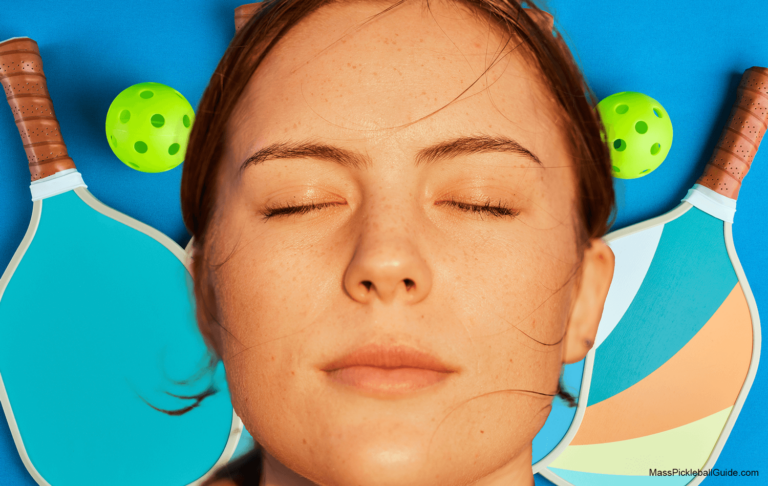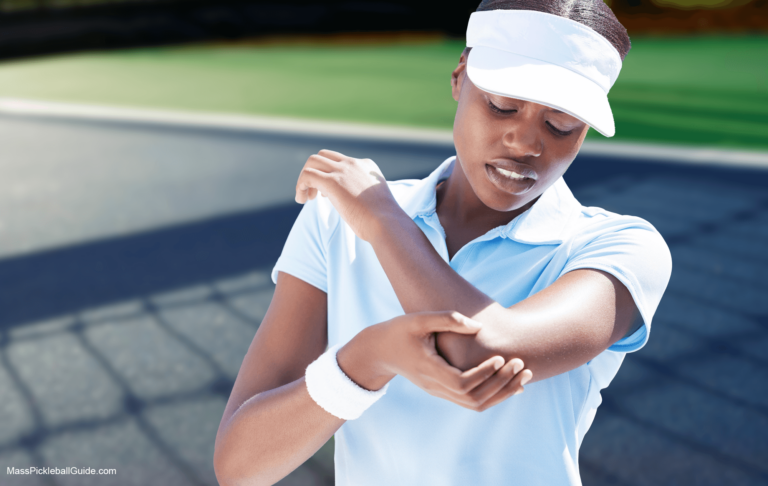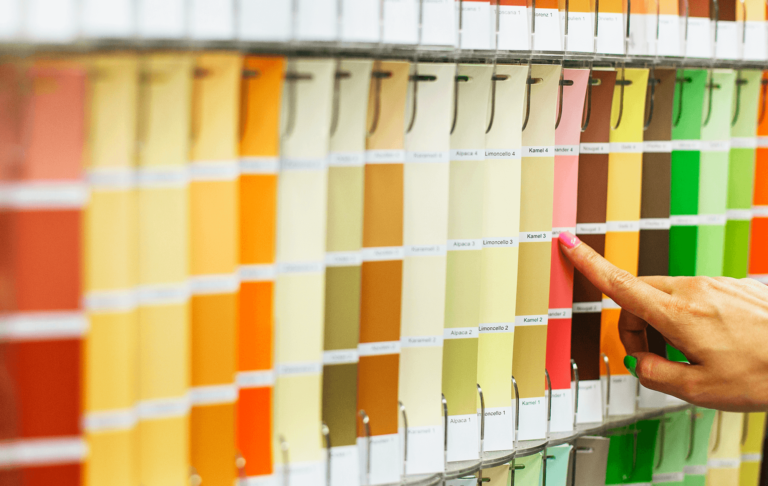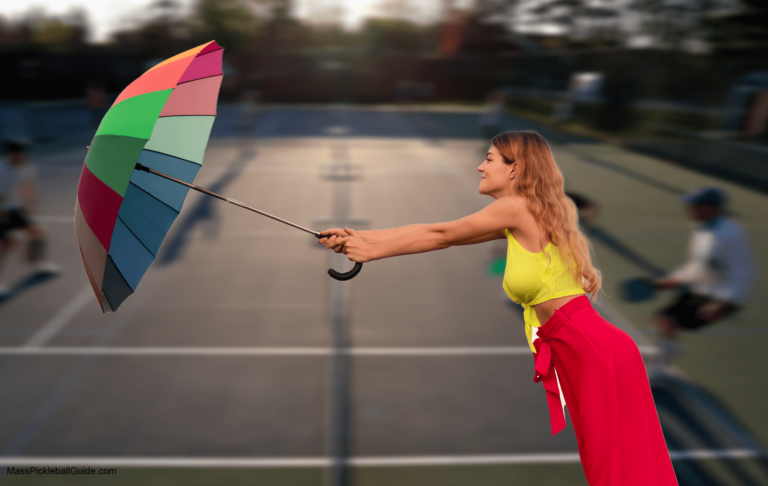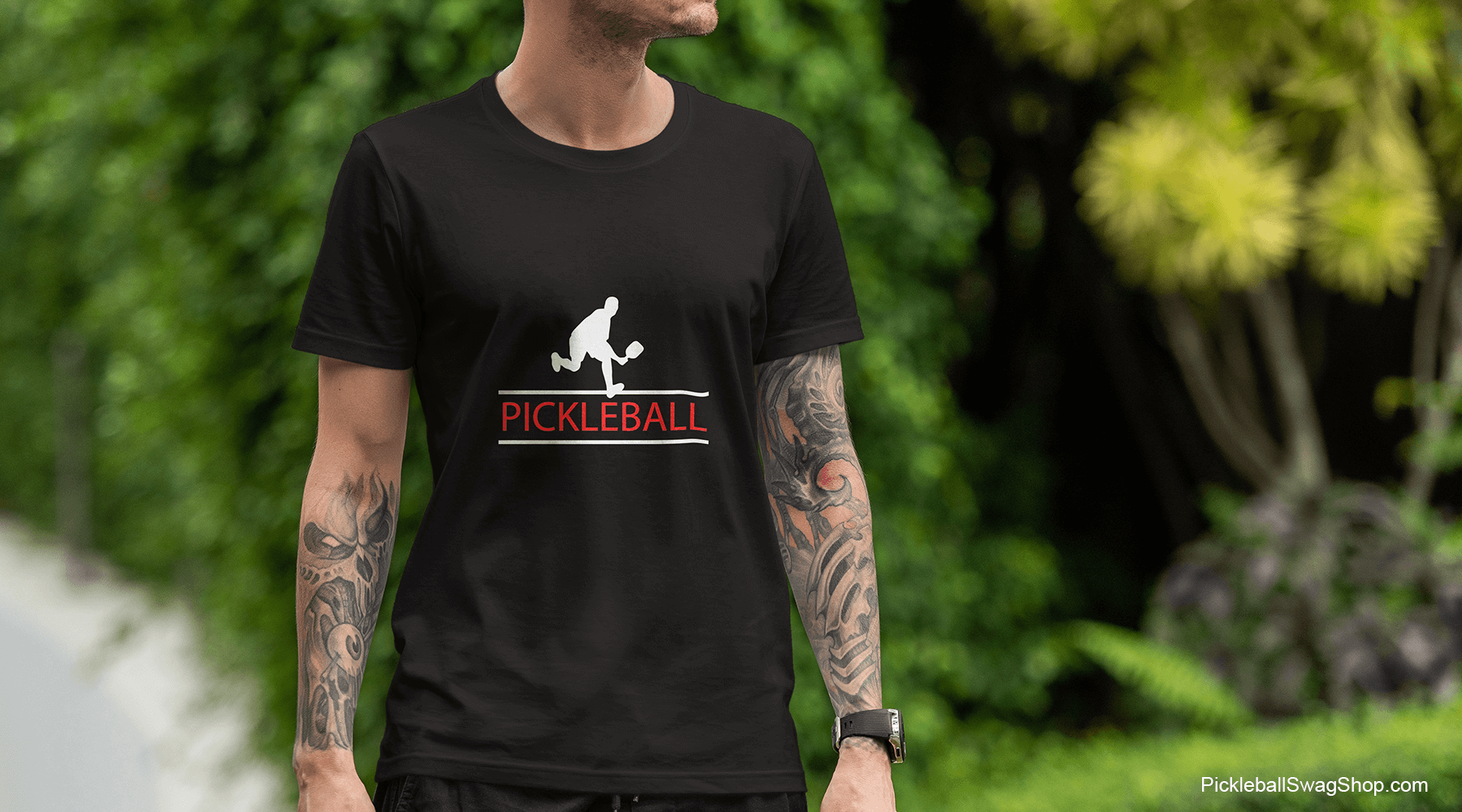Indoor vs Outdoor Pickleball Balls: Key Differences Explained
know the differences
It’s crucial to understand the nuanced differences between indoor and outdoor pickleball balls. Surprisingly, these differences aren’t just confined to the court but extend to the very heart of the game – the pickleballs themselves.
Your Key Takeaways
| Aspect | Indoor Pickleballs | Outdoor Pickleballs |
|---|---|---|
| Number of Holes | 26 larger holes | 40 smaller holes |
| Hole Size | Larger, affecting airflow and speed | Smaller, denser for wind resistance |
| Court Compatibility | Better suited for gym floors and indoor courts | Ideal for concrete or asphalt surfaces |
| Environmental Resistance | Less durable against harsh weather conditions | Crafted to withstand outdoor elements like wind and sun |
| Playing Characteristics | Softer feel, slower play | Harder, faster, and more durable for aggressive gameplay |
Indoor and outdoor pickleballs are not just different; they are engineered for specific environments and styles of play.
The Great Divide: Holes, Hardness, and Handling
Indoor Pickleballs: A Closer Look
Indoor pickleballs, typically designed with 26 larger holes, are tailored for the less abrasive and more controlled environment of an indoor court. These larger holes make the ball lighter and more responsive to subtle strokes, a perfect match for the smooth surface of an indoor court (learn more about indoor and outdoor pickleballs here). Indoor pickleballs cater to a gameplay style that values precision over power, where each shot is a thoughtful play rather than a test of strength.
Characteristics
- Holes: Indoor balls typically have 26 larger holes
- Weight: Lighter than their outdoor counterparts
- Play Style: More about strategy and less about brute force

Outdoor Pickleballs: Built for the Elements
On the flip side, outdoor pickleballs are a different beast. Crafted with 40 smaller holes, these balls are designed to withstand the unpredictable elements of outdoor play. The smaller holes reduce the impact of wind, keeping the ball on its intended course. This design lends itself well to outdoor surfaces like concrete or asphalt, where the ball encounters more wear and tear. Outdoor pickleballs are made of harder plastic, which not only aids in their durability but also affects their bounce and flight characteristics. For those interested in the art of choosing the right color for their pickleball, this Pickleball Ball Color Picker can be a handy guide.
Characteristics
- Holes: Outdoor balls usually have 40 smaller holes
- Durability: Made to endure harsher playing conditions
- Play Style: Suited for a faster, more aggressive style of play
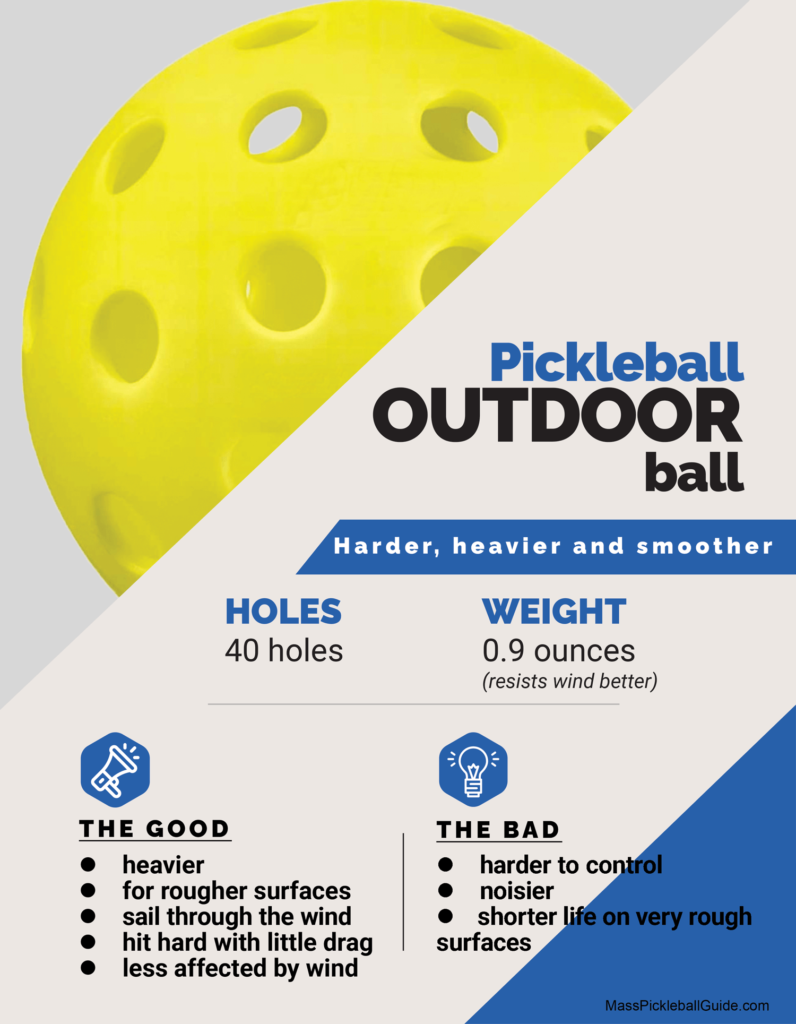
The Impact of Climate and Court on Pickleball Choice
The choice between indoor and outdoor pickleballs isn’t merely a matter of preference; it’s largely dictated by the playing environment. Climate and court surface play pivotal roles in determining the most suitable ball type.
Indoor Play: Calm and Controlled
Indoor environments offer a consistent, climate-controlled setting free from the whims of weather. This stability makes indoor pickleballs the ideal choice. Their larger holes and lighter weight are perfect for the smooth, often wooden surfaces of indoor courts. The absence of wind and sun means these balls can maintain their intended flight path and bounce, allowing for a game focused on skill and strategy. For insights into the nuances of indoor courts, check out Understanding Pickleball Court.
Outdoor Play: Braving the Elements
Outdoor pickleball, conversely, demands balls that can stand up to the challenges of varying weather conditions. The smaller holes in outdoor pickleballs reduce the impact of wind, ensuring a more predictable trajectory. These balls are also built to endure the rougher surfaces of outdoor courts, such as asphalt or concrete. Players who frequent outdoor courts should consider the specifics of Pickleball Court Paint Surface to understand how surface type influences ball behavior.
Outdoor pickleball in the freezing cold? YES!
Balancing Weight, Hardness, and Texture
When it comes to pickleball, the devil is in the details. Weight, hardness, and texture are crucial factors that differentiate indoor from outdoor balls.
Weight Matters
The weight of a pickleball significantly influences its speed and how hard it hits the paddle. Indoor pickleballs are lighter, allowing for a slower game that prioritizes precision. In contrast, outdoor pickleballs are slightly heavier, catering to a faster-paced, power-driven game. This difference in weight can be subtle but impactful, as outlined in our article on Pickleball Weight.
Hardness and Texture
Outdoor pickleballs are generally made of harder plastic to withstand the wear and tear of outdoor play. This increased hardness translates to a faster bounce and a more aggressive style of play. Indoor balls, being softer, offer a different bounce and feel, impacting the game’s tempo and style. The hardness of the balls is a vital consideration for players, as discussed in our deep dive into What is Pickleball Made Of.
The Durability Factor: Longevity in Different Environments
Durability is a key factor in the pickleball selection process. How long a ball lasts depends greatly on whether it’s designed for indoor or outdoor use.
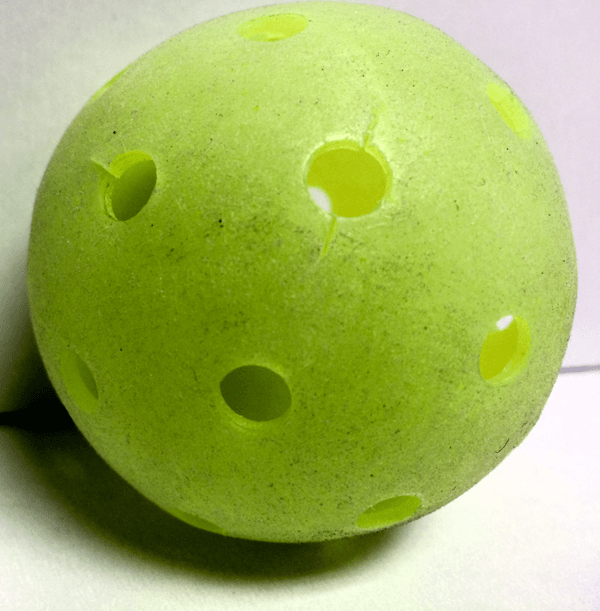
Indoor Balls: Longer Lasting in a Gentle Environment
Indoor pickleballs typically have a longer lifespan. The smoother indoor court surfaces and the absence of environmental factors like sun and wind mean less wear and tear on the ball. However, it’s important to note that indoor balls are not invincible; they too can lose their shape or bounce over time. For players looking to extend the life of their equipment, understanding the Durability of Pickleballs is crucial.
Outdoor Balls: Tough but Not Indestructible
Outdoor pickleballs, though made of harder plastic for durability, face more challenging conditions. The rougher surfaces of outdoor courts and exposure to the elements mean these balls can wear down faster. Players who frequently play outdoors should be prepared to replace their balls more regularly. The Pickleball Courts on Tennis Courts article offers additional insights into the effects of different court surfaces on ball wear.
What color is best for indoor pickleballs?
Lousy weather or limited outdoor pickleball courts force you indoors? Chances are you will be using a white pickleball – whether you bring your own or they are supplied by the facility. White pickleball balls are more visible against the darker surfaces of indoor courts.
And the best part is that this color won’t leave marks or scuff the pickleball court surface. If you’re looking for the best indoor pickleball ball, look for a top-rated ball from reputable sources that specialize in high quality pickleball balls.
What color is best for outdoor pickleballs?
Yellow for pickleball ball color is the one of the most popular choices for outdoor pickleball. They are highly visible against outdoor surfaces and easier to track in bright sunlight.
Gaining ground is green and orange balls for outdoor pickleball. Many of these choices depend on the color of the pickleball court. There aren’t that many manufacturers of outdoor pickleball – the Onix Pure 2 Outdoor ball is a top-rated option for outdoor play and is the best selling ball for the last couple of years.
Concluding Thoughts: Choosing the Right Ball for Your Game
Choosing the right pickleball — indoor or outdoor — can significantly influence your playing experience. While both types of balls are designed for the same game, the differences in their construction and intended use are critical.
- For a more strategic, precision-based game, indoor balls are the way to go.
- If you prefer a faster-paced, power-driven game, then outdoor balls are your best bet.
Remember, using the right ball in the appropriate setting not only enhances your performance but also ensures the longevity of your equipment. For beginners looking to get started, the Best Beginner Pickleball Paddles guide can be a valuable resource.
In conclusion, whether you play indoors or outdoors, understanding the subtle yet significant differences between the two types of pickleballs can profoundly impact your game. By choosing wisely, you can optimize your play experience and enjoy the wonderful world of pickleball to its fullest.
Confused about what color your pickleball ball should be?
Embracing the uniqueness of each type of ball, from the size and number of holes to the weight, hardness, and durability, allows players to tailor their game to their environment and style. Whether you’re a seasoned player or a newcomer to the sport, the right choice in pickleball can elevate your game, bringing a new level of enjoyment and mastery to your play.


